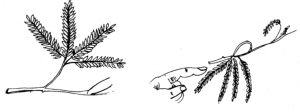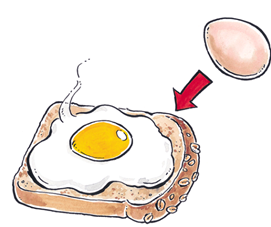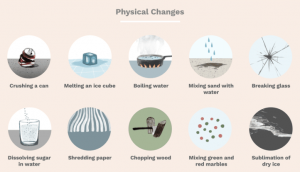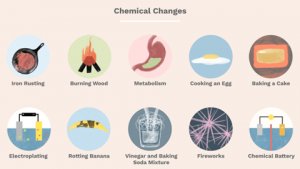Theme | Changes around us |
Relevant Grades | Class 6 & 7 |
Key Learning Objectives |
|
Session Duration | 1 Hour (Approximately) |
- THE MISSION
There are various substances available in the market and in a nearby garden in which you work as a manager. You are tasked with the responsibility of separating 100 substances out from 500 substances present the market and garden based on the change it is capable of undergoing as reversible and irreversible changes. The task should be completed within 20 minutes’ game time or else all the substances in the market will undergo irreversible changes and the elements and products that can go through reversible change will decay if not completed within the time specified. On completion of the first level the player earns total 1000 points with each correct substance gets 10 points each. The gamer has to strategically complete the separation as they would be faced with a lot of obstacles in the process and after separation the substances have to be packaged and processed to be sold. The second step of the process involves you being a scientist and investigating the substances that will undergo physical and chemical changes and speeding the process and complete the process of change for 100 substances in spite of all obstacles and win another 1000 points.
- CONCEPTS
Everything around us is undergoing a process of change. Our hair and nails keep growing. Leaves die and new leaves take their place. While some changes in our environment are temporary and can change back to their original positions, other changes are relatively permanent.
On this basis, changes around us can be classified into two broad categories:
- Reversible changes
- Irreversible changes
Reversible changes can be described as changes that can be reversed by reversing the action or changing the conditions. Example: freezing of water, rolling of a chapati from dough etc.
Irreversible changes can be described as changes that cannot be reversed even after bringing about changes in the conditions. Example: rusting of iron, cooking of vegetables etc.


Substances and materials usually undergo two major types of changes:
- Physical change: This represents a change not in the chemical identity but the physical form of a substance. When substances undergo a physical change, there is no formation of a new substance and more or less these changes can be reversed. Example: boiling of water and melting of ice represent reversible physical changes while growing of height is an irreversible physical change.

- Chemical change: This represents a change in the chemical identity of a substance. These are irreversible changes because the original substance gets converted into a new substance and cannot be brought back. Example: cooking of rice, burning of matchstick etc.

- Difference between physical and chemical changes:
Physical Change | Chemical Change |
A change in matter which occurs without causing any change in the composition of the matter is known as physical change | While a chemical change is defined as the change in the chemical composition of matter |
Usually, physical changes are reversible in nature | While chemical changes are often irreversible |
No new products are formed when an object undergoes physical change | Chemical changes often lead to formation of new products |
These changes have no impact on the molecular composition of the substance | Chemical changes have a direct impact on the chemical bonds and molecular composition of a substance |
A few changes occur when cooling or heating is done | These changes involve absorption or release of energy |
There are other ways to bring about changes in substances:
- Mixing two substances together: A small amount of curd is added to warm milk which leads to conversion of that milk into curd. This is an irreversible change.
When we add salt to water it becomes salty but this is a reversible change.
Expansion and Contraction: In order to make tools like an axe, the ring of its iron blade is heated which allows it to expand i.e. become larger in size and then is allowed to cool down which makes it contract again i.e. become smaller in size leading to a tight fit of the handle.
GAME DESIGN
- Problem statement
There are various substances available in the market and in a nearby garden in which you work as a manager. You are tasked with the responsibility of separating 100 substances from 500 substances present in the market and garden based on the change it is capable of undergoing as reversible and irreversible changes. The task should be completed within 20 minutes’ game time or else all the substances in the market will undergo irreversible changes and the elements and products that can go through reversible change will decay if not completed within the time specified. On completion of the first level the player earns 1000 points with each correct substance gets 10 points each. The gamer has to strategically complete the separation as they would be faced with a lot of obstacles in the process and after separation the substances have to be packaged and processed to be sold. The second step of the process involves you being a scientist and investigating the substances that will undergo physical and chemical changes and speeding the process and complete the process of change for 100 components in spite of all obstacles and win another 1000 points.
- Game design overview
There are various substances available in the market and in a nearby garden in which you work as a manager. You are tasked with the responsibility of separating 100 substances from 500 different substances from the market and garden based on the change it is capable of undergoing as reversible and irreversible changes. The task should be completed within 20 minutes (7 minutes’ game time) or else all the substances in the market will undergo irreversible changes and the elements and products that can go through reversible change will decay if not completed within the time specified. On completion of the first level the player earns 1000 points with each substance fetch 10 points for each substance. The gamer has to strategically complete the separation as they would be faced with a lot of obstacles in the process and after separation the substances have to be packaged and processed to be sold. The second step of the process involves you being a scientist and investigating the substances that will undergo physical and chemical changes and speeding the process and complete the process of change for 100 components in spite of all obstacles and win another 1000 points.
- How to design the game?
- Step I
There are various substances available in the market and in a nearby garden in which you work as a manager. You are tasked with the responsibility of separating 100 substances from a pack of 500 substances spread in the market and garden based on the change it is capable of undergoing as reversible and irreversible changes. The task should be completed within 7 minutes’ game time or else all the substances in the market will undergo irreversible changes and the elements and products that can go through reversible change will decay if not completed within the time specified.
Hint: There is a huge fungal attack that is happening in all the markets near you and it will also affect your market if the substances are not properly stored and applied fungicides within a span of 7 minutes and you will start losing 25% of your profit every 2 minutes into the task and exceeding 7 minutes you will lose 100% of the profit as well as the 1000 points.
- Step II
The second step of the process involves you being a scientist and investigating the substances that will undergo physical and chemical changes and speeding the process and complete the process of change for 100 components in spite of all obstacles and win another 1000 points.
Hint: The step should be completed within a time frame of additional 3 minutes or else the substances will disintegrate and cannot undergo any form of change.
- Step III
On completion of the first two steps, another attack by insects is unleashed upon the market and it is your responsibility to protect the substances.
Hint: The use of pesticides and other equipment should be carefully selected and the third part of the game should be completed in 3 minutes and you will earn a total of 300 points in the game and also a profit increase of 50% on successful completion of the game.
- ASSESSMENT
Learning Objective Based Evaluation (0-1) | Q1 | Q2 | Q3 | Q4 | ||
|
|
|
| |||
Higher Order Thinking Skills | Problem Solving | Critical Thinking | Innovation | Creativity | ||
Q5 | Q6 | Q7 | Q8 | Q9 | Q10 | |
|
|
|
|
|
| |
Learning Objective Based Evaluation Total Score | /4 |
Higher Order Thinking Skills Total Score | /8 |
Total Score | /12 |
Learning Objective Based Evaluation
1 point Questions:
Q1. Which of the following is not a physical change?
- Crushing of a can
- Tearing of paper
- Rusting of iron
- None of the above
Q2. Which of the following is a not reversible change?
- freezing of water
- rolling of a chapati from dough
- Cooking of vegetables
- None of the above
Q3. Which of the following statements is a component of chemical change?
- No new products are formed when an object undergoes this type of change
- These changes have no impact on the molecular composition of the substance
- This type of change is often irreversible
- None of the above
Q4. Which of the following is a component of physical change?
- A change in matter which occurs without causing any change in the composition.
- A few changes occur when cooling or heating is done
- Chemical changes often lead to formation of new products
- None of the above
Evaluation of HOTS (Higher Order Thinking Skills)
Identification of the Problem Statement:
Q5. What is the goal of the game that you have designed? (1 point)
________________________________________________________________
Q6. Does the game designed solve the problem? Justify your answer. (1 point)
________________________________________________________________
Solution of the Problem Statement:
Q7. What are the common types of changes that you see around your environment? What are the types of changes that humans contribute to? (1 point)
________________________________________________________________
Q8. What would happen if no form of change ever occurred in any substances? Substantiate you answer with effects? (1 point)
________________________________________________________________
Innovation in the Problem Statement:
Q9. What are the innovative aspects of the solution for which the game is designed? (2 points)
________________________________________________________________
Creativity in the Game Design:
Q10. Describe and explain the unique design elements used in the game. (2 points)
________________________________________________________________
Disclaimer: This document is meant to be used for educational purposes only. The content here has been curated from various online sources. We do not intend to infringe on any copyrights. Please note that there are third party links in this module and Atal Innovation Mission or NITI Aayog does not endorse any person(s) or organizations mentioned on or related to these links.







